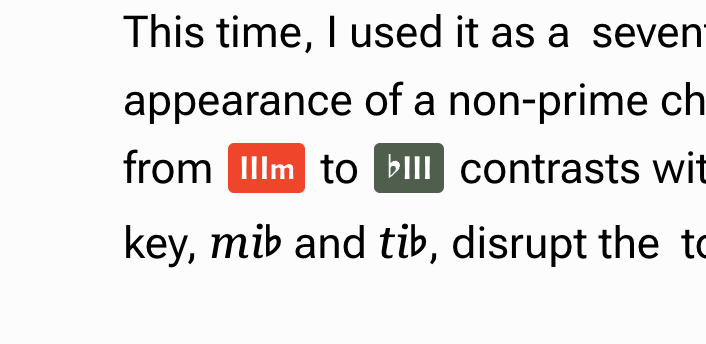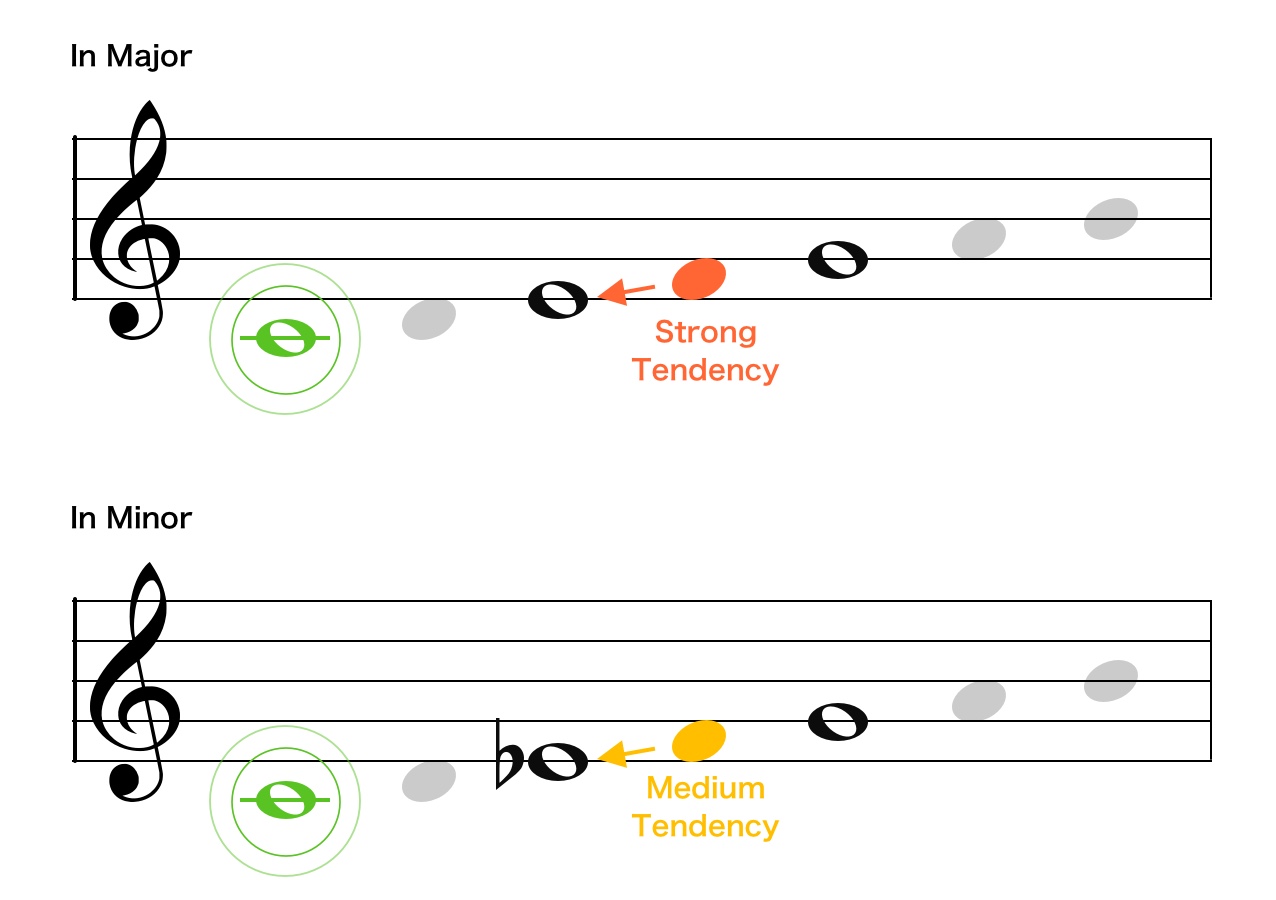Forum Replies Created
-
AuthorPosts
-
yuta @yuta
Hello Plugmon! Is there any plan to continue with the website translation? I think my nephew will love this site!
That’s so nice to hear, it motivates me!
I do plan to keep translating it. Just been swamped with other work this year, so I haven’t had time to sit down and do it yet🥺
The next chapter to be translated will be Rhythm chapter 2. But before that, I want to revise the Japanese version a bit to make sure it’s polished, so it might take a little time.
Still, this whole project is my life’s work, so I promise I’ll get through all of it eventually!
yuta @yutaSorry sir, just saw the reply. Now the site can be logged in but there is a problem with the image display, I think it probably has something to do with the fact that the Japanese version of the site is still 403 forbidden, please deal with it. Thank you for your help.
Ah, I forgot that part. As you suggested, most of the image files are located under the domain soundquest.jp. I had to edit the permission settings of that domain too.
Now (finally) it should all work as expected! Thanks.yuta @yutaHello sir, I’m asking my friend who had Japanese ip to help with the posting now that our site is blocking IPs outside of Japan.
Hi, thank you for reporting it despite the difficulties!
It looks like the issue that mikejlam pointed out has occurred again. I’ve edited the access configuration file again, but… if the hosting company is regularly overwriting the file, I’ll need to request them to stop doing so☹️yuta @yutaHello sir, the pictures on the website won’t open, and the Japanese version of the website won’t open either.
Thank you for the report!
It seems that the server company hosting the site’s data had automatically configured settings to block access from outside Japan for security enhancement purposes.
I have edited the file, and if everything goes well, the permissions should be restored. How does it look now?yuta @yutaThe link to the Blackadder chord article returned a 404 error when accessed from the TOC.
also, are there any plans to translate the rest of the site (it’s been 99 articles for a while now)? i know it’s hard work, but i’ve been so invested in reading this chapter by chapter, i would love to be able to read the advanced articles.
And thanks so much for this treasure trove of music theory. Cheers!
Thanks, it was mistakenly set as a private article.
yeah I’m gonna proceed translation for the rest of the articles. I was just too busy last year😂
But the priority is not so high because, you know, this is a free project.yuta @yutaIn fact, I only found this website in the first place because I specifically wanted to learn the science and theory of modern Japanese music. Because I’m from overseas, it’s very hard to find informative resources in English focused on it, let alone be about it.
Haha, that’s true—seen from a different perspective, the Japanese version can indeed be considered a good resource for learning about the characteristics of Japanese pop music😂
-
This reply was modified 1 year ago by
 yuta.
yuta.
yuta @yutaThe audio on Nexus by 2nd Up/Down is not working, is it just me?
I’ve tried switching to different browsers but its not playing as well. I’ve not checked other chapters after this chapter but the previous ones are working fine.
It was indeed a link error! I’ve fixed it now. Thanks for the report.
yuta @yutathank you so much for this website! im gonna make sure to make use of it as much as i can! <3<3<3<3
😇👍
yuta @yutaAhh, I certainly didn’t notice that 😭 By the way, does the English translation have the same content as the Japanese site? I noticed some are different like the part about TDS.
Yes. The flow of the topics is mostly the same, but the content is quite different. The following points, in particular, are different:
-Many examples are taken from Japanese music.
-Emphasis is placed on important topics in Japanese music.
-Conversely, topics that are not as important in Japanese music have been reduced.In short, the Japanese version is optimized solely for the Japanese music scene, so I don’t think there is any benefit for people from other regions to go out of their way to read it.
yuta @yutaHi AcryoXO2,
Thank you for the report, but the “st” in the article is an abbreviation for “semitones.” It is mentioned earlier in the article, but I think it was easy to miss, so I bolded the text to make it more noticeable!I’m glad you are enjoying my site😇
yuta @yutaHmm… I apologize for the various issues that have arisen😭
I tried turning off the visual/text switch function and updating the plugins, but it seems that didn’t resolve the tag display problem…As for the profile screen, the errors are occurring due to the various modifications I’ve messed around with. I will continue to investigate solutions for this as well.
It’s strange that my dummy accounts posting sample topics are all general accounts without special permissions, and they are not experiencing any issues. If I could reproduce the problem on my end, it would be easier to solve, but since I haven’t been able to do that yet, it might take a little more time.
In any case, I appreciate your detailed bug report!
yuta @yutaHi, basically, this site deals with the three classic elements of music: melody, harmony, and rhythm. It doesn’t cover sound production for specific genres. While I do have ambitions to systematically introduce knowledge in areas like sound design, arrangement, and mixing, that will be further down the line.
When it comes to EDM sound production, I believe YouTube tutorials are the strongest resource. Many aspects, such as sidechain routing, differ between DAWs, so gaining knowledge by watching videos that show the actual DAW workflow is the most efficient method in my opinion.
yuta @yutaHi, bracketed words like [mib], [lab] and [tib] are raw codes that were shown mistakenly; they should have been converted to CSS-styled do-re-mi syllables (with an italic Serif font). They’re now fixed!

As to tags unintentionally shown, I’m still not sure about it since I cannot reproduce that issue on my side.
I changed some of the settings of the forum regarding allowed HTML tags, so can you please try posting a reply again?And I’d like to know if there are tabs for switching Visual/Text editor, and if changing these tabs makes difference.

I really appreciate your cooperation!🥹
yuta @yutaIn Pitch Structure in Rap Flow (Part 2) there is no censor on the name of the 3rd song in the table shown, I assume this is unintentional as the song’s name was censored in the before part.
Ah, Thanks!! I fixed that part.
And I’m happy, you’re the first to post a reply on this whole website😄yuta @yutaAs you rightly pointed out, there is often a claim that the overtone series provides a basis and the overtone series may serve as a “a piece of the puzzle” of tendency. However, many issues remain unresolved. Chief among them is how to explain the minor scale.
Taking the C minor scale as an example, in this scale, the F note is considered to have less tendency because both neighboring notes are a whole tone away. (This is actually mentioned in “Great Songwriting Techniques” too.)
However, purely in terms of the relationship between F and the tonal center, which is C, this remains consistent with the major scale; F is still distantly related as the 21st overtone.Thus, we can see that a change in tendency occurs depending on the neighboring tones. Therefore, it becomes evident that the concept of tendency involves the entire structure of the scale and cannot be simply explained by the frequency ratios or the overtone order of just two tones (a tone vs the center).
Similarly, in the C minor scale, A♭ exhibits a strong tendency while F with a medium tendency. But comparing their order in overtone series, A♭ is the 13th (though large errors are acknowledged) and F is the 21st. Here, the pattern is reversed and the law is disrupted.
Another question arises: If the overtone series were the sole determining factor, wouldn’t it be contradictory if the ti♭ (the 7th overtone) or fa♯ (the 11th overtone) were not stable?
Of course, non-diatonic tones should not stabilize within diatonic tonality. However, this implies that the specific “context” of tonality, which is not something that exists as physical sound waves, influences our cognition. Therefore, the conclusion remains that explaining everything solely through the overtone series will not work. Things are not that straightforward.What I believe to be an appropriate understanding at this point is; the tendency theory relies on the highly fundamental “axiom” of chord theory that “tertian chords are stable”.
In chord theory, even though the stability of major chords can be theoretically explained by the overtone series, this does not apply to minor chords. This parallels the discussion of tendencies, where hypotheses that work well in a major scale fail in minor.
Currently, theories regarding stability and harmony are being debated as culturally dependent, so it would be premature to hastily conclude tendencies as purely physical properties. -
This reply was modified 1 year ago by
-
AuthorPosts
